 W
WThe military history of Indonesia includes the military history of the modern nation of Republic of Indonesia, as well as the military history of the states which preceded and formed it. It encompassed a kaleidoscope of conflicts spanning over a millennia. The ancient and medieval part of it began as tribal warfare began among indigenous populations, and escalated as kingdoms emerged. The modern part is defined by foreign colonial occupations, battles for independence through guerrilla warfare during Indonesian National Revolution, regional conquests and disputes with neighbouring countries, as well as battles between the Republic and separatist factions. Since the formation of the Republic, the military has played significant role in state affairs. However, in Post-Suharto era, the Indonesian military has retreated from politics, yet it still possesses some influences.
 W
WThe 1st Infantry Battalion of the Royal Netherlands East Indies Army was a Dutch colonial military unit that was active in the Dutch East Indies during World War II and the Indonesian National Revolution.
 W
W2e Afdeling, Vliegtuiggroep V or short 2-VLG-V was a squadron of the Royal Netherlands East Indies Army Air Force from the 1st of July 1941 to the 8th of March 1942.
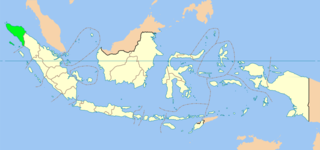 W
WThe 2003–2004 Indonesian offensive in Aceh against the Free Aceh Movement (GAM) separatists was launched on May 19, 2003, and lasted nearly one year. It followed a two-week ultimatum to GAM to accept special autonomy under Indonesian rule. It was one of the Indonesian military's largest campaigns since the 1975 invasion of East Timor. It severely disabled the rebel movement, and along with the 2004 Indian Ocean earthquake brought the 30-year conflict in Aceh to an end.
 W
WThe Aceh War, also known as the Dutch War or the Infidel War (1873–1904), was an armed military conflict between the Sultanate of Aceh and the Kingdom of the Netherlands which was triggered by discussions between representatives of Aceh and the United States in Singapore during early 1873. The war was part of a series of conflicts in the late 19th century that consolidated Dutch rule over modern-day Indonesia.
 W
WThe Siege of Batavia was a military campaign led by Sultan Agung of Mataram to capture the Dutch port-settlement of Batavia in Java. The first attempt was launched in 1628, and the second in 1629; both were unsuccessful. Jan Pieterszoon Coen, the Governor-General of the Dutch East Indies, managed to repel the sieges and beat off all of Sultan Agung's attacks.
 W
WThe Battle of Semarang, in Indonesia also known as Pertempuran Lima Hari was a clash between Japanese forces of the Sixteenth Army and Indonesian forces consisting of People's Security Agency personnel and pemuda in October 1945 at the city of Semarang, Central Java. The battle is considered as the first major clash involving the Indonesian military.
 W
WThe Communist insurgency in Sarawak occurred in Malaysia from 1962 to 1990, and involved the North Kalimantan Communist Party and the Malaysian Government. It was one of the two Communist insurgencies to challenge the former British colony of Malaysia during the Cold War. As with the earlier Malayan Emergency (1948–1960), the Sarawak Communist insurgents were predominantly ethnic Chinese, who opposed to British rule over Sarawak and later opposed the merger of the state into the newly created Federation of Malaysia. The insurgency was triggered by the 1962 Brunei Revolt, which had been instigated by the left-wing Brunei People's Party in opposition to the proposed formation of Malaysia.
 W
WThe Colonial Reserve Corps was an arm of the Royal Netherlands East Indies Army and an important recruitment depot. The Corps existed from 1890 to 1951 and was located in the Prins Hendrikbarracks in Nijmegen.
 W
WThe Darul Islam rebellion was a war waged between 1949 and 1962 by the Islamic State of Indonesia, commonly known as Darul Islam, to establish an Islamic state in Indonesia. The rebellion began when Sekarmadji Maridjan Kartosuwirjo, a nationalist who had resisted the Dutch during the Indonesian National Revolution, refused to recognize the new Republic of Indonesia. Instead, he proclaimed the establishment of the Islamic State of Indonesia on 7 August 1949.
 W
WThe djong, jong, or jung is a type of ancient sailing ship originating from Java that was widely used by Javanese and Malay sailors. The word was and is spelled jong in its languages of origin, the "djong" spelling being the colonial Dutch romanisation.
 W
WThe Dutch–Portuguese War was an armed conflict involving Dutch forces, in the form of the Dutch East India Company and the Dutch West India Company, against the Portuguese Empire. Beginning in 1602, the conflict primarily involved the Dutch companies invading Portuguese colonies in the Americas, Africa, India and the Far East. The war can be thought of as an extension of the Eighty Years' War being fought in Europe at the time between Spain and the Netherlands, as Portugal was in a dynastic union with the Spanish Crown after the War of the Portuguese Succession, for most of the conflict. However, the conflict had little to do with the war in Europe and served mainly as a way for the Dutch to gain an overseas empire and control trade at the cost of the Portuguese. English forces also assisted the Dutch at certain points in the war. Because of the commodity at the center of the conflict, this war would be nicknamed the Spice War.
 W
WThe First Sumatran expedition, which featured the Battle of Quallah Battoo in 1832, was a punitive expedition by the United States Navy against the village of Kuala Batee, presently a subdistrict in Southwest Aceh Regency. The reprisal was in response to the massacre of the crew of the merchantman Friendship a year earlier. The frigate Potomac and its crew defeated the local uleëbalang (ruler)'s forces and bombed the settlement. The expedition was successful in stopping Sumatran attacks on U.S. shipping for six years until another vessel was plundered under different circumstances, resulting in a second Sumatran expedition in 1838.
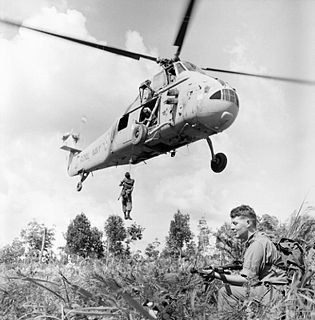 W
WThe Indonesia–Malaysia confrontation or Borneo confrontation was a violent conflict from 1963–66 that stemmed from Indonesia's opposition to the creation of Malaysia. The creation of Malaysia was the amalgamation of the Federation of Malaya, Singapore and the crown colony/British protectorates of North Borneo and Sarawak in September 1963. Vital precursors to the conflict included Indonesia's policy of confrontation against Netherlands New Guinea from March–August 1962 and the Brunei Revolt in December 1962.
 W
WThe Indonesian National Armed Forces are the military forces of the Republic of Indonesia. It consists of the Army (TNI-AD), Navy (TNI-AL), and Air Force (TNI-AU). The President of Indonesia is the commander-in-chief of the Armed Forces. In 2016, it comprises approximately 395,500 military personnel including the Indonesian Marine Corps, which is a branch of the Navy.
 W
WThe Indonesian occupation of East Timor began in December 1975 and lasted until October 1999. After centuries of Portuguese colonial rule in East Timor, a 1974 coup in Portugal led to the decolonisation of its former colonies, creating instability in East Timor and leaving its future uncertain. After a small-scale civil war, the pro-independence Fretilin declared victory in the capital city of Dili and declared an independent East Timor on 28 November 1975.
 W
WThe insurgency in Aceh, officially designated the Aceh disturbance by the Indonesian government, was a conflict fought by the Free Aceh Movement (GAM) between 1976 and 2005, with the goal of making the province of Aceh independent from Indonesia. The aftermath of a strong military offensive in 2003 and the 2004 Indian Ocean earthquake brought a peace agreement and an end to the insurgency.
 W
WThe invasion of Java in 1811 was a successful British amphibious operation against the Dutch East Indian island of Java that took place between August and September 1811 during the Napoleonic Wars. Originally established as a colony of the Dutch Republic, Java remained in Dutch hands throughout the French Revolutionary and Napoleonic Wars, during which time the French invaded the Republic and established the Batavian Republic in 1795, and the Kingdom of Holland in 1806. The Kingdom of Holland was annexed to the First French Empire in 1810, and Java became a titular French colony, though it continued to be administered and defended primarily by Dutch personnel.
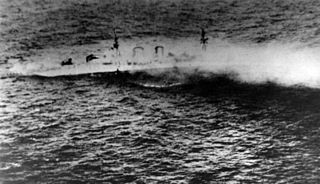 W
WThe Second Battle of the Java Sea was the last naval action of the Netherlands East Indies campaign, of 1941–42. It occurred on 1 March 1942, two days after the first Battle of the Java Sea. It saw the end of the last Allied warships operating in the waters around Java, allowing Japanese forces to complete their conquest of the Dutch East Indies unhindered.
 W
WThe Java War or Diponegoro War was fought in central Java from 1825 – 1830, between the colonial Dutch Empire and native Javanese rebels. The war started as a rebellion led by Prince Diponegoro, a leading member of the Javanese aristocracy who had previously cooperated with the Dutch.
 W
WThe Korps Marechaussee te voet were a colonial gendarmerie of the Royal Netherlands East Indies Army (KNIL), principally used for counter-insurgency in the Dutch East Indies.
 W
WThe Legion of Ratu Adil, also known as Angkatan Perang Ratu Adil (APRA) or the Prince Justice Legion was a pro-Dutch militia and private army established during the Indonesian National Revolution. It was founded by the former KNIL Captain Raymond Westerling following his demobilisation on 15 January 1949. The militia's name was derived from a passage from the medieval Book of Prophecies of Jojo Boyo which prophesied the coming of a Ratu Adil or Queen of Justice who would be of Turkish descent and come to save the people of Java and establish universal peace and justice. With his mixed Turkish heritage in mind, Westerling used the myth of Prince Justice to create a following.
 W
WThe Pamalayu campaign was a military expeditionary force sent by Javanese King Kertanegara of Singhasari to conquer the Sumatran Melayu Kingdom. It was decreed in 1275, though perhaps not undertaken until later.
 W
WThe Royal Netherlands East Indies Army was the military force maintained by the Netherlands in its colony of the Netherlands East Indies, in areas that are now part of Indonesia. The KNIL's air arm was the Royal Netherlands East Indies Army Air Force. Elements of the Royal Netherlands Navy were also stationed in the Netherlands East Indies.
 W
WThe Royal Netherlands East Indies Army Air Force was the air arm of the Royal Netherlands East Indies Army in the Dutch East Indies from 1939 until 1950. It was an entirely separate organisation from the Royal Netherlands Air Force.
 W
WThe second Sumatran expedition was a punitive expedition by the United States Navy against inhabitants of the island of Sumatra. After Malay warriors or pirates had massacred the crew of the American merchant ship Eclipse, an expedition of two American warships landed a force that defeated the Malays in two short engagements.
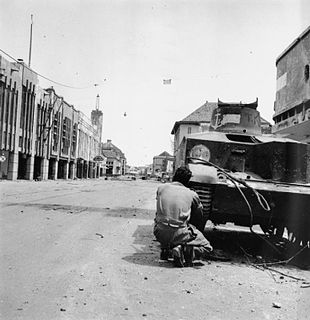 W
WThe Battle of Surabaya was fought between regular infantry and militia of the Indonesian nationalist movement and British and British Indian troops as a part of the Indonesian National Revolution against the re-imposition of Dutch colonial rule. The peak of the battle was in November 1945. The battle was the largest single battle of the revolution and became a national symbol of Indonesian resistance. Considered a heroic effort by Indonesians, the battle helped galvanise Indonesian and international support for Indonesian independence. 10 November is celebrated annually as Heroes' Day.
 W
WTrunajaya rebellion or Trunajaya War was the ultimately unsuccessful rebellion waged by the Madurese prince Trunajaya and fighters from Makassar against the Mataram Sultanate and its Dutch East India Company (VOC) supporters in Java during the 1670s.
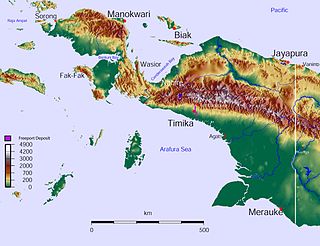 W
WThe West New Guinea dispute (1950–1962), also known as the West Irian dispute, was a diplomatic and political conflict between the Netherlands and Indonesia over the territory of Netherlands New Guinea. While the Netherlands had ceded sovereignty to Indonesia on 27 December 1949 following an independence struggle, the Indonesian government had always claimed the Dutch-controlled half of New Guinea on the basis that it had belonged to the Dutch East Indies and that the new Republic of Indonesia was the legitimate successor to the former Dutch colony.